Deck 4: Applications of the Derivative
Question
Question
Question
Question
Question
Question
Question
Question
Question
Question
Question
Question
Question
Question
Question
Question
Question
Question
Question
Question
Question
Question
Question
Question
Question
Question
Question
Question
Question
Question
Question
Question
Question
Question
Question
Question
Question
Question
Question
Question
Question
Question
Question
Question
Question
Question
Question
Question
Question
Question
Question
Question
Question
Question
Question
Question
Question
Question
Question
Question
Question
Question
Question
Question
Question
Question
Question
Question
Question
Question
Question
Question
Question
Question
Question
Question
Question
Question
Question
Question

Unlock Deck
Sign up to unlock the cards in this deck!
Unlock Deck
Unlock Deck
1/118
Play
Full screen (f)
Deck 4: Applications of the Derivative
1
Given the graph of  , locate the absolute extrema (if they exist) on the interval
, locate the absolute extrema (if they exist) on the interval  .
. 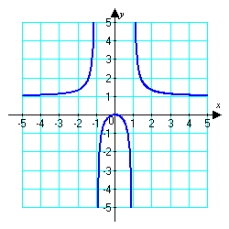
A) absolute max:
B) absolute min:
C) absolute min:
D) no absolute extrema
 , locate the absolute extrema (if they exist) on the interval
, locate the absolute extrema (if they exist) on the interval  .
. 
A) absolute max:

B) absolute min:

C) absolute min:

D) no absolute extrema
absolute max: 

2
Using Newton's method with  , determine the third iteration when approximating the root to at least six-digit accuracy of the following equation. x3 + x2 - 5x + 4 = 0
, determine the third iteration when approximating the root to at least six-digit accuracy of the following equation. x3 + x2 - 5x + 4 = 0
A) -3.062500
B) -3.060647
C) -3.060691
D) -3.060992
 , determine the third iteration when approximating the root to at least six-digit accuracy of the following equation. x3 + x2 - 5x + 4 = 0
, determine the third iteration when approximating the root to at least six-digit accuracy of the following equation. x3 + x2 - 5x + 4 = 0A) -3.062500
B) -3.060647
C) -3.060691
D) -3.060992
-3.060647
3
Find the linear approximation, L(x), to f(x) at x = x0. 
A)
B)
C)
D)

A)

B)

C)

D)


4
Given the graph of  , locate the absolute extrema (if they exist) on the interval
, locate the absolute extrema (if they exist) on the interval  .
. 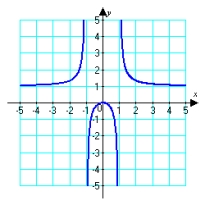
A) absolute max:
B) absolute min: and
and 
C) absolute min:
D) no absolute extrema
 , locate the absolute extrema (if they exist) on the interval
, locate the absolute extrema (if they exist) on the interval  .
. 
A) absolute max:

B) absolute min:
 and
and 
C) absolute min:

D) no absolute extrema

Unlock Deck
Unlock for access to all 118 flashcards in this deck.
Unlock Deck
k this deck
5
Given the graph of  , locate the absolute extrema (if they exist) on the interval
, locate the absolute extrema (if they exist) on the interval  .
. 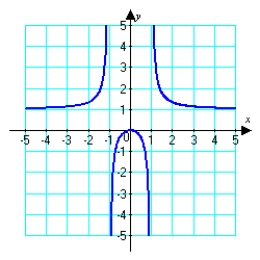
A) absolute max:
B) absolute min: and
and 
C) absolute min:
D) no absolute extrema
 , locate the absolute extrema (if they exist) on the interval
, locate the absolute extrema (if they exist) on the interval  .
. 
A) absolute max:

B) absolute min:
 and
and 
C) absolute min:

D) no absolute extrema

Unlock Deck
Unlock for access to all 118 flashcards in this deck.
Unlock Deck
k this deck
6
Find the linear approximation at x = 0 to show that the following commonly used approximation is valid for "small" x. 


Unlock Deck
Unlock for access to all 118 flashcards in this deck.
Unlock Deck
k this deck
7
Use linear approximation of  at
at  to estimate the quantity of
to estimate the quantity of  to the nearest ten thousandth.
to the nearest ten thousandth.
A)
B)
C)
D)
 at
at  to estimate the quantity of
to estimate the quantity of  to the nearest ten thousandth.
to the nearest ten thousandth.A)

B)

C)

D)


Unlock Deck
Unlock for access to all 118 flashcards in this deck.
Unlock Deck
k this deck
8
Use a linear approximation to estimate 
A) 0
B) 0.18
C) 0.1
D) 0.02

A) 0
B) 0.18
C) 0.1
D) 0.02

Unlock Deck
Unlock for access to all 118 flashcards in this deck.
Unlock Deck
k this deck
9
Use a linear approximation to estimate  Note that 17.2 is near 16 which is
Note that 17.2 is near 16 which is 
A) 3.23649
B) 2.03649
C) 2.0375
D) 3.08312
 Note that 17.2 is near 16 which is
Note that 17.2 is near 16 which is 
A) 3.23649
B) 2.03649
C) 2.0375
D) 3.08312

Unlock Deck
Unlock for access to all 118 flashcards in this deck.
Unlock Deck
k this deck
10
Use Newton's method with x0 = 2.6 to compute x1 and x2 without the use of a calculator.
f(x) = x3 - 3x - 5
f(x) = x3 - 3x - 5

Unlock Deck
Unlock for access to all 118 flashcards in this deck.
Unlock Deck
k this deck
11
A certain company estimates that it can sell f(x)-thousand video game consoles at the price of $x as given in the table.  Use a linear approximation to estimate the number of consoles that can be sold at $62.
Use a linear approximation to estimate the number of consoles that can be sold at $62.
A) approximately 105 thousand consoles
B) approximately 108 thousand consoles
C) approximately 130 thousand consoles
D) approximately 138 thousand consoles
 Use a linear approximation to estimate the number of consoles that can be sold at $62.
Use a linear approximation to estimate the number of consoles that can be sold at $62.A) approximately 105 thousand consoles
B) approximately 108 thousand consoles
C) approximately 130 thousand consoles
D) approximately 138 thousand consoles

Unlock Deck
Unlock for access to all 118 flashcards in this deck.
Unlock Deck
k this deck
12
Find the linear approximation at x = 0 for each of f (x) = (x + 1)2 + 5, g(x) = 6 + sin(2x) and  . Graph each function together with its linear approximation.
. Graph each function together with its linear approximation.
 . Graph each function together with its linear approximation.
. Graph each function together with its linear approximation.
Unlock Deck
Unlock for access to all 118 flashcards in this deck.
Unlock Deck
k this deck
13
Use Newton's method to find an approximate root of the equation  (accurate to six decimal places).
(accurate to six decimal places).
A) 0.306232
B) 0.216232
C) 0.136232
D) 0.219565
 (accurate to six decimal places).
(accurate to six decimal places).A) 0.306232
B) 0.216232
C) 0.136232
D) 0.219565

Unlock Deck
Unlock for access to all 118 flashcards in this deck.
Unlock Deck
k this deck
14
-The impedance Z of a simple RL (resistive inductive) circuit is given by
 , where R is the resistance of the resistor, L is the inductance of the inductor, and is the angular frequency of the applied voltage. Find a linear approximation of Z(L) for small values of L assuming all other quantities are constant. Show all of your work.
, where R is the resistance of the resistor, L is the inductance of the inductor, and is the angular frequency of the applied voltage. Find a linear approximation of Z(L) for small values of L assuming all other quantities are constant. Show all of your work. 
Unlock Deck
Unlock for access to all 118 flashcards in this deck.
Unlock Deck
k this deck
15
Find the linear approximation, L(x), to f(x) at x = x0. 
A)
B)
C)
D)

A)

B)

C)

D)


Unlock Deck
Unlock for access to all 118 flashcards in this deck.
Unlock Deck
k this deck
16
Approximate  accurate to 3 decimal places using Newton's method. State the function used.
accurate to 3 decimal places using Newton's method. State the function used.
A) 2.289 using
B) 2.359 using
C) 2.219 using
D) 2.289 using
 accurate to 3 decimal places using Newton's method. State the function used.
accurate to 3 decimal places using Newton's method. State the function used.A) 2.289 using

B) 2.359 using

C) 2.219 using

D) 2.289 using


Unlock Deck
Unlock for access to all 118 flashcards in this deck.
Unlock Deck
k this deck
17
Explain why Newton's method fails for the following equation with the specified initial guess. 
A) Using we see that f is not differentiable at
we see that f is not differentiable at 
B) Using we obtain
we obtain  .
.
C) Using we obtain
we obtain  which will give
which will give 
D) Using we see that f does not have any real roots.
we see that f does not have any real roots.

A) Using
 we see that f is not differentiable at
we see that f is not differentiable at 
B) Using
 we obtain
we obtain  .
.C) Using
 we obtain
we obtain  which will give
which will give 
D) Using
 we see that f does not have any real roots.
we see that f does not have any real roots.
Unlock Deck
Unlock for access to all 118 flashcards in this deck.
Unlock Deck
k this deck
18
Newton's method fails for the given initial guess. Explain why the method fails and, if possible, find a root by correcting the problem. Round to four decimal places, if necessary.  , x0 = -1
, x0 = -1
A) f '(-1) = 0; -1.905, 0.105
B) f '(-1) does not exist; -1.905, 0.105
C) f (-1) = 0; 1.905, -0.105
D) f (-1) does not exist; 1.905, -0.105
 , x0 = -1
, x0 = -1A) f '(-1) = 0; -1.905, 0.105
B) f '(-1) does not exist; -1.905, 0.105
C) f (-1) = 0; 1.905, -0.105
D) f (-1) does not exist; 1.905, -0.105

Unlock Deck
Unlock for access to all 118 flashcards in this deck.
Unlock Deck
k this deck
19
Given the graph of f(x), draw in the tangent lines used in Newton's method to determine x1 and x2 after starting at x0 = 1. 


Unlock Deck
Unlock for access to all 118 flashcards in this deck.
Unlock Deck
k this deck
20
Using Newton's method, approximate the root of the following equation to at least six-digit accuracy. x3 + x2 - 3x + 5 = 0
A) -2.777778
B) -2.774551
C) -2.751101
D) -2.757031
A) -2.777778
B) -2.774551
C) -2.751101
D) -2.757031

Unlock Deck
Unlock for access to all 118 flashcards in this deck.
Unlock Deck
k this deck
21
Given the graph of  , locate the absolute extrema (if they exist) on the interval
, locate the absolute extrema (if they exist) on the interval  .
. 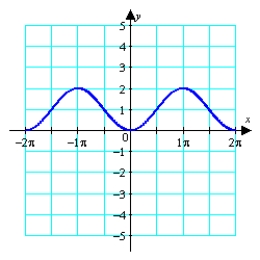
A) absolute max: absolute min:
absolute min: 
B) absolute max: absolute min:
absolute min: 
C) absolute max: absolute min:
absolute min: 
D) no absolute extrema
 , locate the absolute extrema (if they exist) on the interval
, locate the absolute extrema (if they exist) on the interval  .
. 
A) absolute max:
 absolute min:
absolute min: 
B) absolute max:
 absolute min:
absolute min: 
C) absolute max:
 absolute min:
absolute min: 
D) no absolute extrema

Unlock Deck
Unlock for access to all 118 flashcards in this deck.
Unlock Deck
k this deck
22
Given  determine if the critical number
determine if the critical number  represents a local maximum, local minimum or neither.
represents a local maximum, local minimum or neither.
A) local maximum
B) local minimum
C) neither
 determine if the critical number
determine if the critical number  represents a local maximum, local minimum or neither.
represents a local maximum, local minimum or neither.A) local maximum
B) local minimum
C) neither

Unlock Deck
Unlock for access to all 118 flashcards in this deck.
Unlock Deck
k this deck
23
Given  determine if the critical number
determine if the critical number  represents a local maximum, local minimum or neither.
represents a local maximum, local minimum or neither.
A) local maximum
B) local minimum
C) neither
 determine if the critical number
determine if the critical number  represents a local maximum, local minimum or neither.
represents a local maximum, local minimum or neither.A) local maximum
B) local minimum
C) neither

Unlock Deck
Unlock for access to all 118 flashcards in this deck.
Unlock Deck
k this deck
24
Find the absolute extrema of the given function on the indicated interval.  on
on 
A) absolute maxima: , absolute minimum:
, absolute minimum: 
B) absolute maximum: , absolute minimum:
, absolute minimum: 
C) absolute maximum: , absolute minimum:
, absolute minimum: 
D) absolute maximum: , absolute minimum:
, absolute minimum: 
 on
on 
A) absolute maxima:
 , absolute minimum:
, absolute minimum: 
B) absolute maximum:
 , absolute minimum:
, absolute minimum: 
C) absolute maximum:
 , absolute minimum:
, absolute minimum: 
D) absolute maximum:
 , absolute minimum:
, absolute minimum: 

Unlock Deck
Unlock for access to all 118 flashcards in this deck.
Unlock Deck
k this deck
25
Given the graph of  , locate the absolute extrema (if they exist) on the interval
, locate the absolute extrema (if they exist) on the interval  .
. 
A) absolute max: absolute min:
absolute min: 
B) absolute min:
C) absolute max: absolute min:
absolute min: 
D) no absolute extrema
 , locate the absolute extrema (if they exist) on the interval
, locate the absolute extrema (if they exist) on the interval  .
. 
A) absolute max:
 absolute min:
absolute min: 
B) absolute min:

C) absolute max:
 absolute min:
absolute min: 
D) no absolute extrema

Unlock Deck
Unlock for access to all 118 flashcards in this deck.
Unlock Deck
k this deck
26
Given  , determine the critical number(s).
, determine the critical number(s).
A)
B)
C)
D)
 , determine the critical number(s).
, determine the critical number(s).A)

B)

C)

D)


Unlock Deck
Unlock for access to all 118 flashcards in this deck.
Unlock Deck
k this deck
27
Given  , determine the absolute extrema on the interval
, determine the absolute extrema on the interval  .
.
A) absolute max: ; absolute min:
; absolute min: 
B) absolute max: and
and  ; absolute min:
; absolute min:  and
and 
C) absolute max: ; absolute min:
; absolute min: 
D) absolute max: ; absolute min:
; absolute min: 
 , determine the absolute extrema on the interval
, determine the absolute extrema on the interval  .
.A) absolute max:
 ; absolute min:
; absolute min: 
B) absolute max:
 and
and  ; absolute min:
; absolute min:  and
and 
C) absolute max:
 ; absolute min:
; absolute min: 
D) absolute max:
 ; absolute min:
; absolute min: 

Unlock Deck
Unlock for access to all 118 flashcards in this deck.
Unlock Deck
k this deck
28
Given  , on the interval
, on the interval  , determine if the critical number
, determine if the critical number  represents a local maximum, local minimum or neither.
represents a local maximum, local minimum or neither.
A) local maximum
B) local minimum
C) neither
 , on the interval
, on the interval  , determine if the critical number
, determine if the critical number  represents a local maximum, local minimum or neither.
represents a local maximum, local minimum or neither.A) local maximum
B) local minimum
C) neither

Unlock Deck
Unlock for access to all 118 flashcards in this deck.
Unlock Deck
k this deck
29
Given  determine the critical number(s).
determine the critical number(s).
A)
B)
C)
D)
 determine the critical number(s).
determine the critical number(s).A)

B)

C)

D)


Unlock Deck
Unlock for access to all 118 flashcards in this deck.
Unlock Deck
k this deck
30
Given the graph of  , locate the absolute extrema (if they exist) on the interval
, locate the absolute extrema (if they exist) on the interval  .
. 
A) absolute max: approximately absolute min:
absolute min: 
B) absolute max: absolute min:
absolute min: 
C) absolute max: absolute min:
absolute min: 
D) no absolute extrema
 , locate the absolute extrema (if they exist) on the interval
, locate the absolute extrema (if they exist) on the interval  .
. 
A) absolute max: approximately
 absolute min:
absolute min: 
B) absolute max:
 absolute min:
absolute min: 
C) absolute max:
 absolute min:
absolute min: 
D) no absolute extrema

Unlock Deck
Unlock for access to all 118 flashcards in this deck.
Unlock Deck
k this deck
31
Find all critical numbers. 
A)

B) ,
, 
C)

D)


A)


B)
 ,
, 
C)


D)



Unlock Deck
Unlock for access to all 118 flashcards in this deck.
Unlock Deck
k this deck
32
Given the graph of  , locate the absolute extrema (if they exist) on the interval
, locate the absolute extrema (if they exist) on the interval  .
. 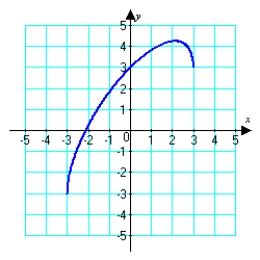
A) absolute max: approximately
B) absolute max: approximately absolute min:
absolute min: 
C) absolute max: approximately absolute min:
absolute min: 
Absolute min:
D) no absolute extrema
 , locate the absolute extrema (if they exist) on the interval
, locate the absolute extrema (if they exist) on the interval  .
. 
A) absolute max: approximately

B) absolute max: approximately
 absolute min:
absolute min: 
C) absolute max: approximately
 absolute min:
absolute min: 
Absolute min:

D) no absolute extrema

Unlock Deck
Unlock for access to all 118 flashcards in this deck.
Unlock Deck
k this deck
33
Determine all critical numbers of  .
.
A)
B)
C)
D)
 .
.A)

B)

C)

D)


Unlock Deck
Unlock for access to all 118 flashcards in this deck.
Unlock Deck
k this deck
34
Find all critical numbers. Then use a graph to determine whether the critical numbers represent a local maximum, local minimum, or neither. 
A) (local maximum),
(local maximum),  (neither),
(neither),  (local minimum)
(local minimum)
B) (local maximum),
(local maximum),  (local maximum),
(local maximum),  (local minimum)
(local minimum)
C) (local maximum),
(local maximum),  (local minimum)
(local minimum)
D) (local minimum),
(local minimum),  (local maximum)
(local maximum)

A)
 (local maximum),
(local maximum),  (neither),
(neither),  (local minimum)
(local minimum)B)
 (local maximum),
(local maximum),  (local maximum),
(local maximum),  (local minimum)
(local minimum)C)
 (local maximum),
(local maximum),  (local minimum)
(local minimum)D)
 (local minimum),
(local minimum),  (local maximum)
(local maximum)
Unlock Deck
Unlock for access to all 118 flashcards in this deck.
Unlock Deck
k this deck
35
Given the graph of  , locate the absolute extrema (if they exist) on the interval
, locate the absolute extrema (if they exist) on the interval  .
. 
A) absolute max: absolute min:
absolute min: 
B) absolute min:
C) absolute max: absolute min:
absolute min: 
D) no absolute extrema
 , locate the absolute extrema (if they exist) on the interval
, locate the absolute extrema (if they exist) on the interval  .
. 
A) absolute max:
 absolute min:
absolute min: 
B) absolute min:

C) absolute max:
 absolute min:
absolute min: 
D) no absolute extrema

Unlock Deck
Unlock for access to all 118 flashcards in this deck.
Unlock Deck
k this deck
36
Find the absolute extrema of the given function on the indicated interval.  on
on 
A) absolute maximum: , absolute minimum:
, absolute minimum: 
B) absolute maximum: , absolute minimum:
, absolute minimum: 
C) absolute maximum: , absolute minimum:
, absolute minimum: 
D) absolute maximum: , absolute minimum:
, absolute minimum: 
 on
on 
A) absolute maximum:
 , absolute minimum:
, absolute minimum: 
B) absolute maximum:
 , absolute minimum:
, absolute minimum: 
C) absolute maximum:
 , absolute minimum:
, absolute minimum: 
D) absolute maximum:
 , absolute minimum:
, absolute minimum: 

Unlock Deck
Unlock for access to all 118 flashcards in this deck.
Unlock Deck
k this deck
37
Given the graph of  , locate the absolute extrema (if they exist) on the interval
, locate the absolute extrema (if they exist) on the interval  .
. 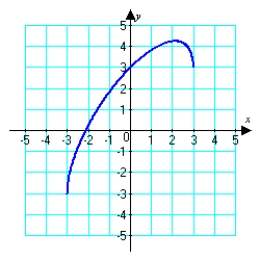
A) absolute max: approximately
B) absolute max: absolute min:
absolute min: 
C) absolute max: absolute min:
absolute min: 
D) no absolute extrema
 , locate the absolute extrema (if they exist) on the interval
, locate the absolute extrema (if they exist) on the interval  .
. 
A) absolute max: approximately

B) absolute max:
 absolute min:
absolute min: 
C) absolute max:
 absolute min:
absolute min: 
D) no absolute extrema

Unlock Deck
Unlock for access to all 118 flashcards in this deck.
Unlock Deck
k this deck
38
Determine all critical numbers of  .
.
A)
B)
C)
D)
 .
.A)

B)

C)

D)


Unlock Deck
Unlock for access to all 118 flashcards in this deck.
Unlock Deck
k this deck
39
Given  , on the interval
, on the interval  , determine the critical number(s).
, determine the critical number(s).
A)
B)
C)
D)
 , on the interval
, on the interval  , determine the critical number(s).
, determine the critical number(s).A)

B)

C)

D)


Unlock Deck
Unlock for access to all 118 flashcards in this deck.
Unlock Deck
k this deck
40
Find all critical numbers by hand. f (x) = x4/3 + 4x1/3 + 24x-2/3
A) -4, 0, 3
B) -4, 3
C) 0
D) -3, 0, 4
A) -4, 0, 3
B) -4, 3
C) 0
D) -3, 0, 4

Unlock Deck
Unlock for access to all 118 flashcards in this deck.
Unlock Deck
k this deck
41
Find the intervals where the function is increasing and decreasing on the specified interval. Use this information to determine all local extrema.  on
on 
 on
on 

Unlock Deck
Unlock for access to all 118 flashcards in this deck.
Unlock Deck
k this deck
42
Determine the intervals where  is concave up and concave down.
is concave up and concave down.
A) concave down for concave up for
concave up for 
B) concave down for concave up for
concave up for 
C) concave down for cancave up for
cancave up for 
D) concave down for and
and  concave up for
concave up for 
 is concave up and concave down.
is concave up and concave down.A) concave down for
 concave up for
concave up for 
B) concave down for
 concave up for
concave up for 
C) concave down for
 cancave up for
cancave up for 
D) concave down for
 and
and  concave up for
concave up for 

Unlock Deck
Unlock for access to all 118 flashcards in this deck.
Unlock Deck
k this deck
43
Using a calculator or computer, estimate the absolute extrema of  on the interval
on the interval  . Round answer to the nearest hundredth.
. Round answer to the nearest hundredth.
A) absolute max: ; absolute min:
; absolute min: 
B) absolute max: ; absolute min:
; absolute min: 
C) absolute max: ; absolute min:
; absolute min: 
D) absolute max: ; absolute min:
; absolute min: 
 on the interval
on the interval  . Round answer to the nearest hundredth.
. Round answer to the nearest hundredth.A) absolute max:
 ; absolute min:
; absolute min: 
B) absolute max:
 ; absolute min:
; absolute min: 
C) absolute max:
 ; absolute min:
; absolute min: 
D) absolute max:
 ; absolute min:
; absolute min: 

Unlock Deck
Unlock for access to all 118 flashcards in this deck.
Unlock Deck
k this deck
44
Find all asymptotes and extrema and sketch a graph. 


Unlock Deck
Unlock for access to all 118 flashcards in this deck.
Unlock Deck
k this deck
45
Determine, by hand, all critical numbers of  and use the First Derivative Test to classify each as a local minimum, local maximum or neither.
and use the First Derivative Test to classify each as a local minimum, local maximum or neither.
A) local maximum at local minimum at
local minimum at 
Neither:
B) local maximum at local minimum at
local minimum at 
Neither:
C) local maximum at local minimum at
local minimum at 
Neither:
D) local maximum at local minimum at
local minimum at 
Neither:
 and use the First Derivative Test to classify each as a local minimum, local maximum or neither.
and use the First Derivative Test to classify each as a local minimum, local maximum or neither.A) local maximum at
 local minimum at
local minimum at 
Neither:

B) local maximum at
 local minimum at
local minimum at 
Neither:

C) local maximum at
 local minimum at
local minimum at 
Neither:

D) local maximum at
 local minimum at
local minimum at 
Neither:


Unlock Deck
Unlock for access to all 118 flashcards in this deck.
Unlock Deck
k this deck
46
Find all asymptotes and extrema and sketch a graph. 


Unlock Deck
Unlock for access to all 118 flashcards in this deck.
Unlock Deck
k this deck
47
A herd of ninety-nine antelope is released onto a small game reserve so that their reproductive habits can be studied. In the beginning the population of the herd increases rapidly in size but eventually slows due to a dwindling food supply. Suppose the population of antelope after t years is given by the function  where
where  . Determine when the population begins to decline.
. Determine when the population begins to decline.
A) 15 years
B) 17 years
C) 18 years
D) 19 years
 where
where  . Determine when the population begins to decline.
. Determine when the population begins to decline.A) 15 years
B) 17 years
C) 18 years
D) 19 years

Unlock Deck
Unlock for access to all 118 flashcards in this deck.
Unlock Deck
k this deck
48
Find the x-coordinates of all extrema and sketch the graph showing global and local behavior of the function. Round answers to nearest thousandth. y = x5 - 150x3 + 460x + 9
A) local max: x = -1.017, x = 9.432 local min: x = -9.432, x = 1.017
B) local max: x = -9.432, x = 1.017 local min: x = -1.017, x = 9.432
C) local max: x = -1.0343 local min: x = 1.0343
D) local max: x = 1.0343 local min: x = -1.0343
A) local max: x = -1.017, x = 9.432 local min: x = -9.432, x = 1.017

B) local max: x = -9.432, x = 1.017 local min: x = -1.017, x = 9.432

C) local max: x = -1.0343 local min: x = 1.0343

D) local max: x = 1.0343 local min: x = -1.0343


Unlock Deck
Unlock for access to all 118 flashcards in this deck.
Unlock Deck
k this deck
49
Determine, by hand, the interval(s) where  is increasing and/or decreasing.
is increasing and/or decreasing.
A)
B) increasing ; decreasing
; decreasing 
C) increasing ; decreasing
; decreasing 
D) increasing ; decreasing
; decreasing 
 is increasing and/or decreasing.
is increasing and/or decreasing.A)

B) increasing
 ; decreasing
; decreasing 
C) increasing
 ; decreasing
; decreasing 
D) increasing
 ; decreasing
; decreasing 

Unlock Deck
Unlock for access to all 118 flashcards in this deck.
Unlock Deck
k this deck
50
Find the intervals where the function is increasing and decreasing. Use this information to determine all local extrema. 
A) decreasing: increasing:
increasing:  local maximum
local maximum 
B) decreasing: increasing:
increasing:  local minimum
local minimum 
C) decreasing: no extrema
no extrema
D) increasing: no extrema
no extrema

A) decreasing:
 increasing:
increasing:  local maximum
local maximum 
B) decreasing:
 increasing:
increasing:  local minimum
local minimum 
C) decreasing:
 no extrema
no extremaD) increasing:
 no extrema
no extrema
Unlock Deck
Unlock for access to all 118 flashcards in this deck.
Unlock Deck
k this deck
51
Find the x-coordinates of all extrema and sketch the graph of  showing global and local behavior. Round answer to nearest thousandth.
showing global and local behavior. Round answer to nearest thousandth. 
 showing global and local behavior. Round answer to nearest thousandth.
showing global and local behavior. Round answer to nearest thousandth. 

Unlock Deck
Unlock for access to all 118 flashcards in this deck.
Unlock Deck
k this deck
52
Find the x-coordinates of all extrema and sketch the graph of  showing global and local behavior.
showing global and local behavior. 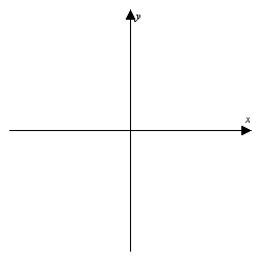
 showing global and local behavior.
showing global and local behavior. 

Unlock Deck
Unlock for access to all 118 flashcards in this deck.
Unlock Deck
k this deck
53
Find (by hand) all critical numbers and use the First Derivative Test to classify each as the location of a local maximum, local minimum or neither. y = x4/3 - 8x1/3 - 6
A) x = 0 (neither)
B) x = -2 (local maxima)
C) x = -2 (local minima)
D) x = 2 (local minima), x = 0 (neither)
A) x = 0 (neither)
B) x = -2 (local maxima)
C) x = -2 (local minima)
D) x = 2 (local minima), x = 0 (neither)

Unlock Deck
Unlock for access to all 118 flashcards in this deck.
Unlock Deck
k this deck
54
Using a calculator or computer, estimate the absolute extrema of  , on the interval
, on the interval  .
.
A) absolute max: ; absolute min:
; absolute min: 
B) absolute max: ; absolute min:
; absolute min: 
C) absolute max: ; absolute min:
; absolute min: 
D) absolute max: ; absolute min:
; absolute min: 
 , on the interval
, on the interval  .
.A) absolute max:
 ; absolute min:
; absolute min: 
B) absolute max:
 ; absolute min:
; absolute min: 
C) absolute max:
 ; absolute min:
; absolute min: 
D) absolute max:
 ; absolute min:
; absolute min: 

Unlock Deck
Unlock for access to all 118 flashcards in this deck.
Unlock Deck
k this deck
55
Sketch a graph of a function with the following properties.  if
if  if
if 

 if
if  if
if 


Unlock Deck
Unlock for access to all 118 flashcards in this deck.
Unlock Deck
k this deck
56
Estimate critical numbers and sketch graphs showing both global and local behavior. 


Unlock Deck
Unlock for access to all 118 flashcards in this deck.
Unlock Deck
k this deck
57
Determine, by hand, all critical numbers of  and use the First Derivative Test to classify each as a local minimum, local maximum or neither.
and use the First Derivative Test to classify each as a local minimum, local maximum or neither.
A) local maximum at local minimum at
local minimum at 
Neither at
B) local maximum at local minimum at
local minimum at 
Neither at
C) local maximum: local minimum:
local minimum: 
Neither at
D) local maximum: local minimum:
local minimum: 
Neither at
 and use the First Derivative Test to classify each as a local minimum, local maximum or neither.
and use the First Derivative Test to classify each as a local minimum, local maximum or neither.A) local maximum at
 local minimum at
local minimum at 
Neither at

B) local maximum at
 local minimum at
local minimum at 
Neither at

C) local maximum:
 local minimum:
local minimum: 
Neither at

D) local maximum:
 local minimum:
local minimum: 
Neither at


Unlock Deck
Unlock for access to all 118 flashcards in this deck.
Unlock Deck
k this deck
58
Find all critical numbers of  and use the First Derivative Test to classify each as a local minimum, local maximum or neither.
and use the First Derivative Test to classify each as a local minimum, local maximum or neither.
A) local maximum: none local minimum: none
Neither at
B) local maximum at local minimum at
local minimum at 
Neither at
C) local maximum at local minimum at
local minimum at 
Neither at
D) local maximum: none local minimum at
Neither at and
and 
 and use the First Derivative Test to classify each as a local minimum, local maximum or neither.
and use the First Derivative Test to classify each as a local minimum, local maximum or neither.A) local maximum: none local minimum: none
Neither at

B) local maximum at
 local minimum at
local minimum at 
Neither at

C) local maximum at
 local minimum at
local minimum at 
Neither at

D) local maximum: none local minimum at

Neither at
 and
and 

Unlock Deck
Unlock for access to all 118 flashcards in this deck.
Unlock Deck
k this deck
59
Determine, by hand, the interval(s) where  is increasing and/or decreasing.
is increasing and/or decreasing.
A) increasing and
and  ; decreasing
; decreasing 
B) increasing ; decreasing
; decreasing 
C) increasing and
and  ; decreasing
; decreasing  and
and 
D) increasing ; decreasing
; decreasing  and
and 
 is increasing and/or decreasing.
is increasing and/or decreasing.A) increasing
 and
and  ; decreasing
; decreasing 
B) increasing
 ; decreasing
; decreasing 
C) increasing
 and
and  ; decreasing
; decreasing  and
and 
D) increasing
 ; decreasing
; decreasing  and
and 

Unlock Deck
Unlock for access to all 118 flashcards in this deck.
Unlock Deck
k this deck
60
Determine, by hand, the interval(s) where  is increasing and/or decreasing.
is increasing and/or decreasing.
A) increasing ; decreasing
; decreasing 
B) increasing and
and  ; decreasing
; decreasing  and
and 
C) increasing and
and  ; decreasing
; decreasing  and
and 
D) increasing and
and  ; decreasing
; decreasing 
 is increasing and/or decreasing.
is increasing and/or decreasing.A) increasing
 ; decreasing
; decreasing 
B) increasing
 and
and  ; decreasing
; decreasing  and
and 
C) increasing
 and
and  ; decreasing
; decreasing  and
and 
D) increasing
 and
and  ; decreasing
; decreasing 

Unlock Deck
Unlock for access to all 118 flashcards in this deck.
Unlock Deck
k this deck
61
Using the critical numbers of  , use the Second Derivative Test to determine all local extrema.
, use the Second Derivative Test to determine all local extrema.
 , use the Second Derivative Test to determine all local extrema.
, use the Second Derivative Test to determine all local extrema.
Unlock Deck
Unlock for access to all 118 flashcards in this deck.
Unlock Deck
k this deck
62
Graph the function and completely discuss the graph. 
A) domain: vertical asymptotes: none; horizontal asymptotes: none; vertical tangents: none; local extrema:
vertical asymptotes: none; horizontal asymptotes: none; vertical tangents: none; local extrema:  ; concave down:
; concave down:  ; x-intercept: none
; x-intercept: none 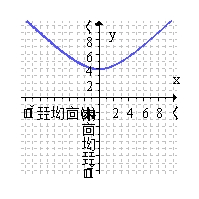
B) domain: vertical asymptotes: none; horizontal asymptotes: none; vertical tangents: none; local extrema:
vertical asymptotes: none; horizontal asymptotes: none; vertical tangents: none; local extrema:  ; concave down:
; concave down:  x-intercept: none
x-intercept: none 
C) domain: vertical asymptotes: none; horizontal asymptotes: none; vertical tangents: none; local extrema:
vertical asymptotes: none; horizontal asymptotes: none; vertical tangents: none; local extrema:  ; concave up:
; concave up:  x-intercept: none
x-intercept: none 
D) domain: vertical asymptotes: none; horizontal asymptotes: none; vertical tangents: none; local extrema:
vertical asymptotes: none; horizontal asymptotes: none; vertical tangents: none; local extrema:  ; concave up:
; concave up:  ; x-intercept: none
; x-intercept: none 

A) domain:
 vertical asymptotes: none; horizontal asymptotes: none; vertical tangents: none; local extrema:
vertical asymptotes: none; horizontal asymptotes: none; vertical tangents: none; local extrema:  ; concave down:
; concave down:  ; x-intercept: none
; x-intercept: none 
B) domain:
 vertical asymptotes: none; horizontal asymptotes: none; vertical tangents: none; local extrema:
vertical asymptotes: none; horizontal asymptotes: none; vertical tangents: none; local extrema:  ; concave down:
; concave down:  x-intercept: none
x-intercept: none 
C) domain:
 vertical asymptotes: none; horizontal asymptotes: none; vertical tangents: none; local extrema:
vertical asymptotes: none; horizontal asymptotes: none; vertical tangents: none; local extrema:  ; concave up:
; concave up:  x-intercept: none
x-intercept: none 
D) domain:
 vertical asymptotes: none; horizontal asymptotes: none; vertical tangents: none; local extrema:
vertical asymptotes: none; horizontal asymptotes: none; vertical tangents: none; local extrema:  ; concave up:
; concave up:  ; x-intercept: none
; x-intercept: none 

Unlock Deck
Unlock for access to all 118 flashcards in this deck.
Unlock Deck
k this deck
63
Sketch the graph of  while answering the following questions.
while answering the following questions.
a. What is the domain and range of ?
?
b. What are the intercepts of ?
?
c. What, if any, are the equation(s) of vertical asymptotes of ?
?
d. What, if any, are the local min(s) and local max(s) of ?
?
e. What, if any, are the inflection point(s) of ?
?
f. What, if it exists, is the equation of the horizontal asymptote of ?
? 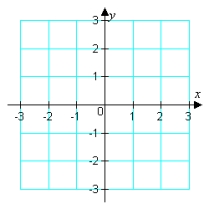
 while answering the following questions.
while answering the following questions.a. What is the domain and range of
 ?
?b. What are the intercepts of
 ?
?c. What, if any, are the equation(s) of vertical asymptotes of
 ?
?d. What, if any, are the local min(s) and local max(s) of
 ?
?e. What, if any, are the inflection point(s) of
 ?
?f. What, if it exists, is the equation of the horizontal asymptote of
 ?
? 

Unlock Deck
Unlock for access to all 118 flashcards in this deck.
Unlock Deck
k this deck
64
Graph the function and completely discuss the graph. 


Unlock Deck
Unlock for access to all 118 flashcards in this deck.
Unlock Deck
k this deck
65
Estimate the intervals where the function shown below is concave up and/or concave down. 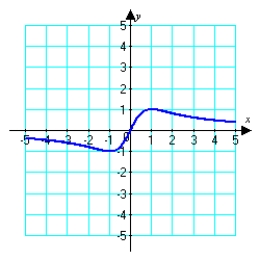
A) concave up for concave down for
concave down for 
B) concave up for concave down for
concave down for 
C) concave up for concave down for
concave down for 
D) concave up for concave down for
concave down for 

A) concave up for
 concave down for
concave down for 
B) concave up for
 concave down for
concave down for 
C) concave up for
 concave down for
concave down for 
D) concave up for
 concave down for
concave down for 

Unlock Deck
Unlock for access to all 118 flashcards in this deck.
Unlock Deck
k this deck
66
Estimate the intervals where the function shown below is concave up and/or concave down. 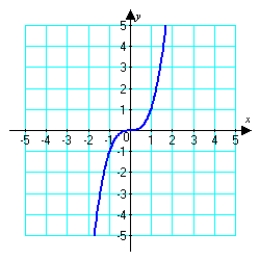
A) concave up for concave down for
concave down for 
B) concave up for concave down for
concave down for 
C) concave up for concave down for
concave down for 
D) concave up for concave down for
concave down for 

A) concave up for
 concave down for
concave down for 
B) concave up for
 concave down for
concave down for 
C) concave up for
 concave down for
concave down for 
D) concave up for
 concave down for
concave down for 

Unlock Deck
Unlock for access to all 118 flashcards in this deck.
Unlock Deck
k this deck
67
The unit price of x units of a certain product is given by  . What is the maximum possible revenue when selling x units? Round answer to nearest dollar.
. What is the maximum possible revenue when selling x units? Round answer to nearest dollar.
A)
B)
C)
D)
 . What is the maximum possible revenue when selling x units? Round answer to nearest dollar.
. What is the maximum possible revenue when selling x units? Round answer to nearest dollar.A)

B)

C)

D)


Unlock Deck
Unlock for access to all 118 flashcards in this deck.
Unlock Deck
k this deck
68
Sketch the graph with the given properties. 
 for all x,
for all x, 
 for
for 
 for
for 
A)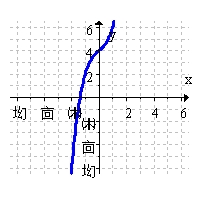
B)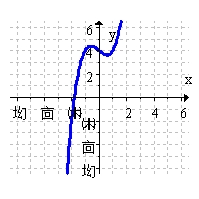
C)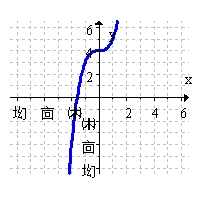
D)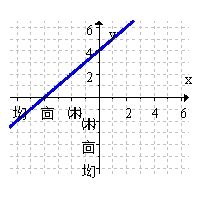

 for all x,
for all x, 
 for
for 
 for
for 
A)

B)

C)

D)


Unlock Deck
Unlock for access to all 118 flashcards in this deck.
Unlock Deck
k this deck
69
Graph the function and completely discuss the graph. 


Unlock Deck
Unlock for access to all 118 flashcards in this deck.
Unlock Deck
k this deck
70
Determine the following significant features by hand and sketch the graph of  .
.
a). intercepts
b). asymptotes
c). extrema
d). inflection points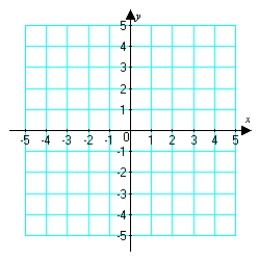
 .
.a). intercepts
b). asymptotes
c). extrema
d). inflection points


Unlock Deck
Unlock for access to all 118 flashcards in this deck.
Unlock Deck
k this deck
71
Graph the function and completely discuss the graph. Round answers to three decimals places, if necessary. 
A) domain: vertical asymptotes: none; horizontal asymptotes: none; vertical tangents: none; local extrema: (0, 0), (14, -121.985); concave down:
vertical asymptotes: none; horizontal asymptotes: none; vertical tangents: none; local extrema: (0, 0), (14, -121.985); concave down:  ;
;
Concave up: ; x-intercepts: (0, 0) and (35, 0)
; x-intercepts: (0, 0) and (35, 0) 
B) domain: vertical asymptotes: none; horizontal asymptotes: none; vertical tangents: none; local extrema: (0, 0), (14, -121.985); concave up:
vertical asymptotes: none; horizontal asymptotes: none; vertical tangents: none; local extrema: (0, 0), (14, -121.985); concave up: 
X-intercepts: (0, 0) and (35, 0)
C) domain: vertical asymptotes: none; horizontal asymptotes: none; vertical tangents: x = 0; local extrema: (0, 0), (14, -121.985); concave up:
vertical asymptotes: none; horizontal asymptotes: none; vertical tangents: x = 0; local extrema: (0, 0), (14, -121.985); concave up: 
X-intercepts: (0, 0) and (35, 0)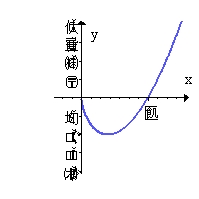
D) domain: vertical asymptotes: none; horizontal asymptotes: none; vertical tangents: x = 0; local extrema: (0, 0), (14, -121.985); concave down:
vertical asymptotes: none; horizontal asymptotes: none; vertical tangents: x = 0; local extrema: (0, 0), (14, -121.985); concave down:  ;
;
Concave up: ; x-intercepts: (0, 0) and (35, 0)
; x-intercepts: (0, 0) and (35, 0) 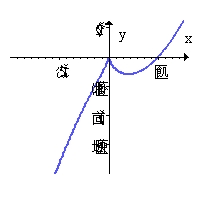

A) domain:
 vertical asymptotes: none; horizontal asymptotes: none; vertical tangents: none; local extrema: (0, 0), (14, -121.985); concave down:
vertical asymptotes: none; horizontal asymptotes: none; vertical tangents: none; local extrema: (0, 0), (14, -121.985); concave down:  ;
;Concave up:
 ; x-intercepts: (0, 0) and (35, 0)
; x-intercepts: (0, 0) and (35, 0) 
B) domain:
 vertical asymptotes: none; horizontal asymptotes: none; vertical tangents: none; local extrema: (0, 0), (14, -121.985); concave up:
vertical asymptotes: none; horizontal asymptotes: none; vertical tangents: none; local extrema: (0, 0), (14, -121.985); concave up: 
X-intercepts: (0, 0) and (35, 0)

C) domain:
 vertical asymptotes: none; horizontal asymptotes: none; vertical tangents: x = 0; local extrema: (0, 0), (14, -121.985); concave up:
vertical asymptotes: none; horizontal asymptotes: none; vertical tangents: x = 0; local extrema: (0, 0), (14, -121.985); concave up: 
X-intercepts: (0, 0) and (35, 0)

D) domain:
 vertical asymptotes: none; horizontal asymptotes: none; vertical tangents: x = 0; local extrema: (0, 0), (14, -121.985); concave down:
vertical asymptotes: none; horizontal asymptotes: none; vertical tangents: x = 0; local extrema: (0, 0), (14, -121.985); concave down:  ;
;Concave up:
 ; x-intercepts: (0, 0) and (35, 0)
; x-intercepts: (0, 0) and (35, 0) 

Unlock Deck
Unlock for access to all 118 flashcards in this deck.
Unlock Deck
k this deck
72
Determine the intervals where  is concave up and concave down. Round answers to nearest hundredth.
is concave up and concave down. Round answers to nearest hundredth.
A) concave up for concave down for
concave down for 
B) concave down for concave up for
concave up for 
C) concave up for
D) concave down for concave up for
concave up for 
 is concave up and concave down. Round answers to nearest hundredth.
is concave up and concave down. Round answers to nearest hundredth.A) concave up for
 concave down for
concave down for 
B) concave down for
 concave up for
concave up for 
C) concave up for

D) concave down for
 concave up for
concave up for 

Unlock Deck
Unlock for access to all 118 flashcards in this deck.
Unlock Deck
k this deck
73
Determine all significant features and sketch a graph. 


Unlock Deck
Unlock for access to all 118 flashcards in this deck.
Unlock Deck
k this deck
74
The total cost of producing and marketing x number of units of a certain product is given by  . For what number x is the total cost a minimum? Round answer to nearest unit.
. For what number x is the total cost a minimum? Round answer to nearest unit.
A)
B)
C)
D)
 . For what number x is the total cost a minimum? Round answer to nearest unit.
. For what number x is the total cost a minimum? Round answer to nearest unit.A)

B)

C)

D)


Unlock Deck
Unlock for access to all 118 flashcards in this deck.
Unlock Deck
k this deck
75
Determine all significant features and sketch a graph. 


Unlock Deck
Unlock for access to all 118 flashcards in this deck.
Unlock Deck
k this deck
76
Estimate the intervals where the function shown below is concave up and/or concave down. 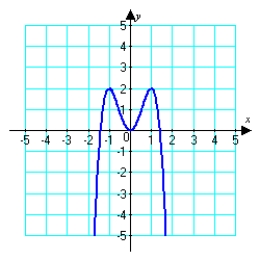
A) concave up for concave down for
concave down for 
B) concave up for concave down for
concave down for 
C) concave up for concave down for
concave down for 
D) concave up for concave down for
concave down for 

A) concave up for
 concave down for
concave down for 
B) concave up for
 concave down for
concave down for 
C) concave up for
 concave down for
concave down for 
D) concave up for
 concave down for
concave down for 

Unlock Deck
Unlock for access to all 118 flashcards in this deck.
Unlock Deck
k this deck
77
Determine all significant features and sketch a graph. 


Unlock Deck
Unlock for access to all 118 flashcards in this deck.
Unlock Deck
k this deck
78
Sketch the graph of  while answering the following questions.
while answering the following questions.
a. What is the domain and range of ?
?
b. What are the intercepts of ?
?
c. What, if any, are the equation(s) of vertical asymototes of ?
?
d. What, if any, are the local min(s) and local max(s) of ?
?
e. What, if any, are the inflection point(s) of ?
?
f. What, if it exists, is the equation of the horizontal asymotote of ?
? 
 while answering the following questions.
while answering the following questions.a. What is the domain and range of
 ?
?b. What are the intercepts of
 ?
?c. What, if any, are the equation(s) of vertical asymototes of
 ?
?d. What, if any, are the local min(s) and local max(s) of
 ?
?e. What, if any, are the inflection point(s) of
 ?
?f. What, if it exists, is the equation of the horizontal asymotote of
 ?
? 

Unlock Deck
Unlock for access to all 118 flashcards in this deck.
Unlock Deck
k this deck
79
Using the critical numbers of  , use the Second Derivative Test to determine all local extrema.
, use the Second Derivative Test to determine all local extrema.
A) critical numbers: ; local max
; local max  ; local min
; local min 
B) critical numbers: ; local max
; local max  ; local min
; local min 
C) critical numbers: ; local max
; local max  ; local min
; local min 
D) critical numbers: ; local max
; local max  ; local min
; local min 
 , use the Second Derivative Test to determine all local extrema.
, use the Second Derivative Test to determine all local extrema.A) critical numbers:
 ; local max
; local max  ; local min
; local min 
B) critical numbers:
 ; local max
; local max  ; local min
; local min 
C) critical numbers:
 ; local max
; local max  ; local min
; local min 
D) critical numbers:
 ; local max
; local max  ; local min
; local min 

Unlock Deck
Unlock for access to all 118 flashcards in this deck.
Unlock Deck
k this deck
80
Determine all significant features by hand and sketch the graph of  .
.
a). intercepts
b). asymptotes
c). extrema
d). inflection points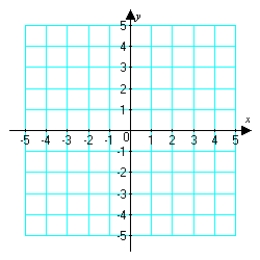
 .
.a). intercepts
b). asymptotes
c). extrema
d). inflection points


Unlock Deck
Unlock for access to all 118 flashcards in this deck.
Unlock Deck
k this deck



